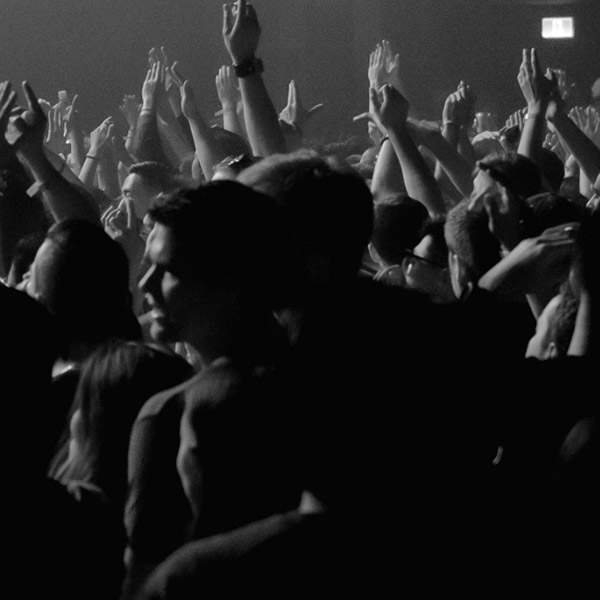Behind the Screens With PLAVE, K-Pop’s Biggest Completely Virtual Band Yet
On April 13, the Circle Chart — South Korea’s longest-running music ranking, and its equivalent to the RIAA — unveiled its latest musician milestones. Alongside accomplishments by Blackpink’s Jisoo, NewJeans and BTS, stood PLAVE — a boy band whose members’ real-life identities are hidden behind digital avatars, but whose commercial performance and ambitions rival K-pop’s biggest human acts.
For almost three decades, Korean music companies have attempted to develop cyber singers, with mixed results. But none have broken through like PLAVE, which with its third mini‑album, February’s Caligo Pt. 1, became the first entirely virtual Korean act to surpass 1 million units sold, according to Circle Chart. But much like Gorillaz — the virtual British band created by Damon Albarn and Jamie Hewlett — the members of PLAVE are, behind the screens that project their avatars, real artists proving they can have real impact without revealing their faces or personal lives.
PLAVE was conceptualized in the unassuming Seoul office building that houses VLAST, an entertainment company that started as a for-hire computer graphics studio and is now a full-service production house for real-time graphics and virtual intellectual property that also provides label and management services to PLAVE, which is currently its sole musical group. Inside its scrappy yet cutting-edge production facility, and under CEO Lee “William” Sunggoo’s direction, the company imagined a virtual band in the style of manhwa, the Korean comics and webtoons that have become increasingly popular over the past two decades thanks in part to the otherworldly good looks of their characters. After successfully pitching the potential of virtual artists to the singer who would go on to voice PLAVE leader Yejun, VLAST recruited four more artists to round out the quintet as Bamby, Noah, Eunho and Hamin. “Each new member was recommended by someone who recognized their musical ability,” Lee says.
According to VLAST, the men behind PLAVE are all artists who previously pursued K-pop or R&B careers. Their virtual selves — brought to life in meticulous 2D detail through motion-capture rendering — sing, dance and rap like any K-pop stars would. But the real men of PLAVE also write, produce, choreograph and play instruments on tracks, a level of creative involvement usually seen in chart-toppers like BTS and Stray Kids that’s still atypical among idol groups.


At VLAST’s Seoul headquarters, creative teams huddle around screens, monitors and camera rigs, overseeing motion-capture stages and ensuring the PLAVE avatars and the actual musicians in the room with them have every dance move and facial expression synced. Through real-time animation, PLAVE can host frequent livestreams with fans and play concerts and festival appearances — so long as venues have a screen to display them.
The quintet’s real members can even see its fans — known as PLLI — as it performs from inside VLAST HQ and respond directly to them. So far, the group has headlined four concerts with in-person audiences, all in Seoul: First, it sold out two April 2024 shows at the city’s 2,500-seat Olympic Hall, then two dates the following October at the 11,000-capacity Jamsil Indoor Stadium, according to VLAST. In a review of the latter, the Korea JoongAng Daily lauded onscreen feats like watching PLAVE “driving a burning motorcycle to the stage,” but noted that the band’s inability to actually meet its audience “greatly limits the range of performance,” while technical glitches jolted fans from the fantasy.
(“We are always committed to delivering the best possible results,” VLAST says. “Enhancing PLAVE’s concert experience involves upgrading every element that allows the audience to feel fully immersed and connected — including minimizing technical issues.”)
“PLLI are the kinds of fans who truly see the real us,” Bamby tells Billboard in a video interview. At 5 foot 9, he’s PLAVE’s shortest member and sports pink hair and magenta eyes. (Whether these avatars’ attributes are in any way directly inspired by the people voicing them remains a secret.) Because of PLAVE’s virtual nature, Bamby continues, “We rely even more on communication platforms. We’re constantly curious about how they’re doing and how they’re experiencing our content.”
Since its March 2023 debut, PLAVE has earned more than 2.1 billion official on-demand global streams, according to Luminate. Before its latest single, “Dash,” became the first song by a Korean virtual group to reach the Billboard Global 200 in February 2025, PLAVE had entered the Global 200 Excl. U.S. chart with “Pump Up the Volume!” and “Way 4 Luv.”

PLAVE joins a long history of virtual acts from Asia. In the mid-1990s, Japan pioneered virtual idols; the first from South Korea was Adam, a Sims-like cyber singer from information technology company Adamsoft who “debuted” in 1998 and whose first album, Genesis, sold a reported 200,000 copies. Adam led a small boom of cyber stars, but corporations ultimately abandoned them as costs exceeded earnings.
Virtual artists began making a comeback at the start of the 2020s after artificial intelligence and metaverse technology trends helped launch groups like Mave:, an AI-powered female quartet that virtual-artist management house Metaverse Entertainment launched in 2023. Korea’s Kakao Entertainment invested a reported 12 billion won (about $9.7 million at the time) in a partnership with Metaverse. While Mave: is strictly operated through technology, other groups with real humans behind virtual facades like PLAVE now exist, including female sextet Isegye Idol and 11-member girl group Itterniti. But none have broken through with significant sales or awards recognition like PLAVE.
“The initial investment is substantial,” Lee says. “But once that foundation is in place, there are certain advantages. Unlike traditional artists, we don’t have costs for things like hair, makeup or long-distance travel. Instead, our resources are directed toward technology, creative development and content production.”
PLAVE’s rapid ascent has attracted financial investment from HYBE and YG Entertainment, which double as strategic advisers on everything from the members’ vocal health to global rollout strategy. “As a company new to the entertainment industry, we valued getting advice and insights from established industry leaders with extensive experience,” Lee says. With global distribution from YG PLUS, Caligo Pt. 1 included the group’s first all-English track, “Island” (co-written by Adrian McKinnon, whose credits range from Rae Sremmurd to ENHYPEN). On June 16, PLAVE will release its debut Japanese single, “Kakurenbo (Hide and Seek),” following a 2024 agreement with HYBE Japan to support PLAVE’s expansion in the market.
“From an international fan’s point of view, it can sometimes be hard to fully grasp the emotions we want to express due to language barriers,” says PLAVE’s Eunho, who appears as a silver-haired rapper with fangs. “Some feelings just don’t translate perfectly, so we’re really glad we got to release an English track this time. We believe it helped us connect more deeply with our fans in English-speaking countries, and we plan to keep exploring multilingual projects.”
For now, VLAST has no plans for developing further virtual artists, focusing its energies entirely on PLAVE. Its current goals for the group include upgrading the concert experience, launching a dedicated mobile app, pushing to “reach more global fans” — including in Western markets — “and introduce them to what virtual artists can offer,” according to Lee.
“The biggest misconception we faced was that virtual idols like PLAVE were fully operated by AI,” he adds. “Even now, in some overseas markets where people aren’t yet familiar with PLAVE, that remains a common misunderstanding.”


The way that blonde, blue-eyed Noah sees it, “one of the coolest parts about PLAVE is that we can do things on stage that other artists can’t — like magical effects or cinematic action scenes. People sometimes say, ‘But aren’t you AI? Doesn’t that make it easier?’ But the truth is, none of it is easy when you actually try it.” (He adds that some members even sustained injuries while rehearsing the “intense” choreography for “Dash,” created by Bamby and Hamin.)
As with so many ascendant pop stars, the real men behind PLAVE have faced their share of privacy invasion. Prying online fans have unearthed clues to the members’ real-life identities; last year, some began stalking them at VLAST and their homes, despite the company’s pleas for fans to respect PLAVE’s privacy and subsequent threat of legal action toward anyone disclosing personal information about the act. When rumors regarding the members’ real identities ran wild across social media and online forums around Caligo Pt. 1’s release, neither the band nor VLAST responded.
The group’s navy-haired, silver-eyed leader, Yejun, promises that in the coming year, “Fans will see us onstage a lot more. Up until now, we’ve had relatively few chances to perform live. In 2025, we want to change that — more concerts and more global tours.” (In early May, PLAVE announced three August dates at Seoul’s KPSO Dome.)
“All five members of PLAVE are passionate about music,” Lee explains. “We believe that high-quality music and performance are what distinguish us from other virtual artists. Creating compelling music is always one of our top priorities.”
“Our chemistry as a group, our direct communication with fans and our distinct musical identity are what have brought us this far,” the black-haired, black-eyed rapper Hamin says. Adds Yejun: “The bond we share as members — the connection, the stories we’ve built and the trust between us — that’s what makes PLAVE special.”
This story appears in the May 17, 2025, issue of Billboard.
Josh Glicksman
Billboard







